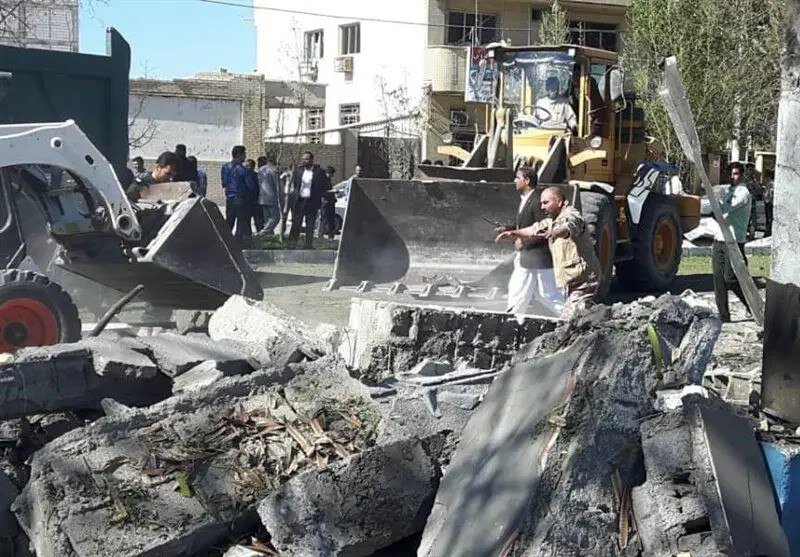Terror strikes, sabotage: tools of adversaries to distract Iran's Tel Aviv strategy

TEHRAN- The terrorist assault occurred in southeastern Iran on Thursday bears striking resemblance to previous incidents orchestrated by entities associated with Iran's adversaries.
On Thursday, Southeast Iran witnessed a series of attacks targeting security outposts in the towns of Chabahar and Rask. The Islamic Revolution Guards Corps (IRGC) reported thwarting the attempt to seize their headquarters, but at a cost of 10 security personnel killed. The Jaish al-Adl terrorist group, known for previous attacks in the region, claimed responsibility.
This incident raises a critical question: why does Iran face terrorist attacks during periods of heightened regional tension? The timing of this attack, following an Israeli airstrike in Damascus that killed Iranian personnel, is particularly dubious.
Sistan and Baluchestan province, bordering Afghanistan and Pakistan, has a history of violence, including clashes with Takfiri terrorists and drug traffickers. The Jaish al-Adl group is a familiar threat, having conducted similar operations in the past.
However, the recent surge in sabotage and terrorist acts suggests a more calculated strategy. The timing and nature of these attacks point towards a deliberate attempt to disrupt Iranian security and send a specific message.
After regaining control and securing the area following the terrorist attack, the IRGC Ground Forces' Southeast Security Headquarters announced the death of 18 terrorists and armed assailants. These individuals, reportedly affiliated with foreign intelligence agencies, planned to destabilize the region by targeting public areas, military installations, and law enforcement facilities in Chabahar and Rask.
A closer examination of recent acts of sabotage and terrorist activities within Iran reveals a pattern.
The methods employed and the timing of these attacks suggest a coordinated effort with specific goals and intended messages too.
In early January, tragedy struck in Kerman near the tomb of Iranian anti-terror commander, Lieutenant General Qassem Soleimani. During a ceremony marking four years since his martyrdom, two explosions occurred, resulting in 84 casualties and over 200 injuries, including three courageous paramedics. Among the victims were 44 women, children, and at least a dozen Afghan nationals. Iran declared a day of mourning, highlighting the gravity of the situation.
Days later, as Iran prepared for parliamentary and Assembly of Experts elections, the city of Borujen witnessed sabotage. Gas pipelines were rocked by explosions, affecting crucial national gas lines responsible for transporting gas across the country.
In the meantime, the Tehran Times highlighted hostile governments’ covert and overt strategies toward Iran, emphasizing the absence of conducive conditions for overt military operations within Iran's borders. However, the existence of covert operations aimed at causing damage with plausible deniability remains a concern, underscoring ongoing threats to Iran's stability.
Exploring reasons behind recent terrorist acts in Iran
A cursory examination of recent events, including the terrorist incident in Kerman, the sabotage in Borujen, and the attack on the police headquarters in Sistan and Baluchestan, reveals a common thread: these acts occur during critical junctures when Iran is gearing up for national events, drawing large crowds. Furthermore, they all share the intent of undermining Iran's national security and stability.
It's evident that the perpetrators behind these acts seek to convey a message to Tehran, suggesting that their affiliates within Iran pose a significant threat. However, their aspirations have been dashed by the resolute response of the Iranian populace, demonstrated through their massive turnout at the 22 Bahman rally and the high voter turnout in the March 1 elections.
Additionally, Iran's security and intelligence apparatus have effectively thwarted numerous terrorist plots, showcasing the nation's preparedness to safeguard its citizens.
Of particular significance is the timing of the recent terrorist attack in Sistan and Baluchestan, occurring just before the International Quds Day rally and in the aftermath of Israel's brazen assault on the consular section of the Iranian embassy in Damascus.
In response to Israel's aggression, the Iranian leadership, including President Ebrahim Raisi and Ayatollah Seyed Ali Khamenei, vowed retaliatory action. This commitment to responding was echoed by President Raisi's declaration on April 2 that Israel's crime would not go unanswered, and Ayatollah Khamenei's statement affirming that Israel would receive a slap in face for the Damascus attack.
In the wake of Iran's firm stance against Israel, speculation abounded in Israeli and Western media regarding the nature and timing of Iran's response.
However, these conjectures remained unanswered, leaving many questions unanswered. It's plausible that the Thursday terrorist attack in southeastern Iran serves as a deliberate ploy to distract or disrupt Iran's focus on its response to Tel Aviv.
